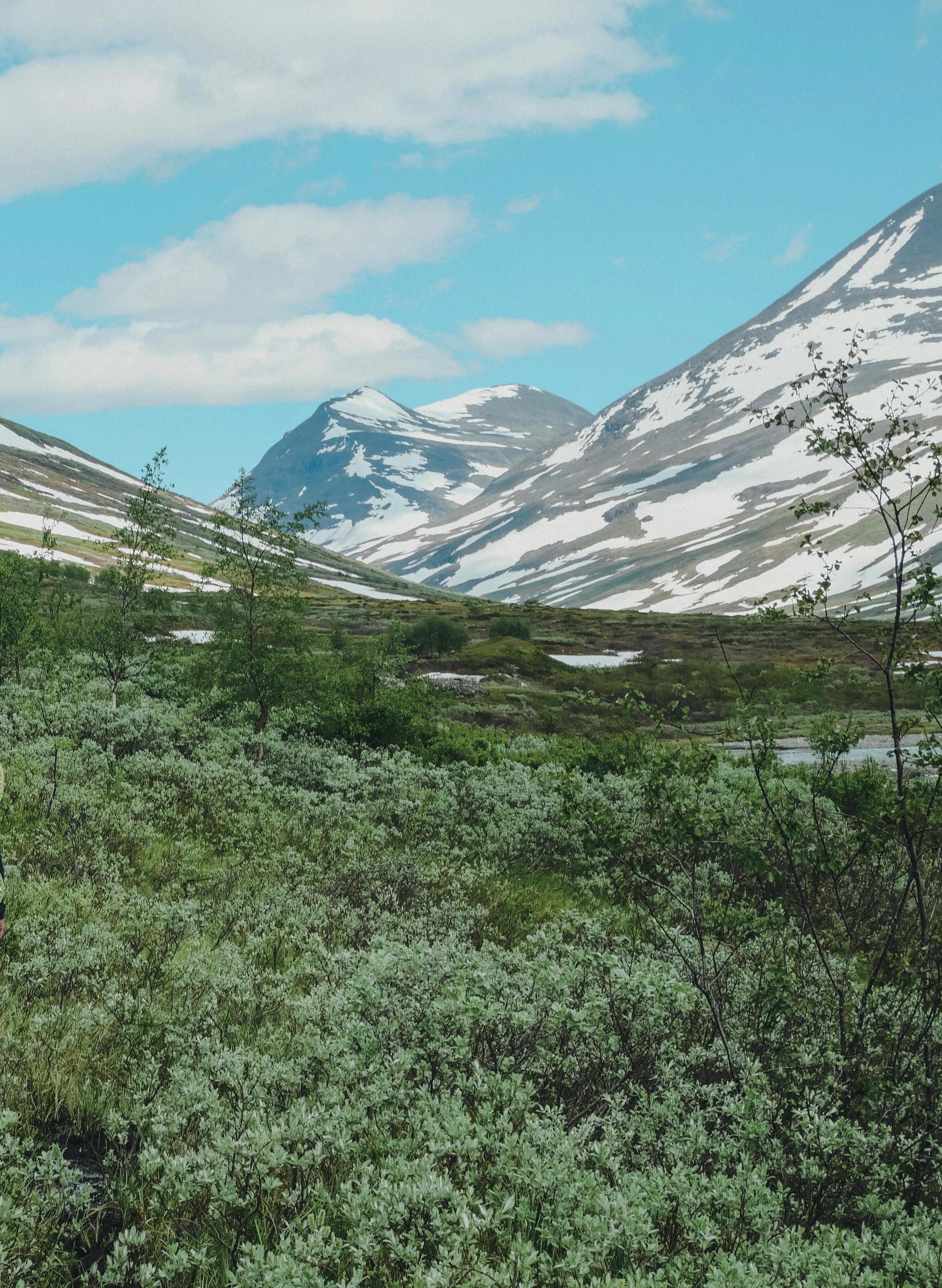
3 minute read
Better Safe Than Sorry
Text: Emma Carlsson / Photo: Emma Svensson
Andreas Hovden from the Red Cross in the Norwegian village of Ringebu teaches us about mountain safety and tells you how to plan a safer hike.
Advertisement
It's impossible not to be inspired and dream about hiking when you're surrounded by beautiful nature. We see clear blue skies and stunning scenery; what we don't see are the possible dangers lurking. But don't worry, with some simple preparation you'll be just like legendary Norwegian adventurer Lars Monsen: ready for anything.
Andreas Hovden is operations manager at the local Red Cross office in Ringebu: an idyllic Norwegian village that's about three hours north of Oslo. Ringebu is bordered by two magnificent national parks: Rondane to the North and Jotunheimen to the West. Put simply: it's a paradise for anyone passionate about the outdoors.
As with any area of natural beauty, many accidents have happened here. But after a couple of conversations with Andreas it becomes clear that the majority of these hiking-related emergencies could have been avoided. The causes of these situations can be split into the following two categories:
Lackofpreparation
Proper planning is essential. You're less likely to have a disaster in the mountains if you follow simple mountain safety rules, explains Andreas: – People without much experience tend not to bring enough clothes, especially when you bear in mind how quickly the weather can change. You can still get hypothermia in the summer!
Our colleague Jenny Wikman experienced first-hand some volatile weather on a hike to Trolltunga in the Norwegian fjords. The forecast had promised sun, but when Jenny and her crew got there, the weather quickly turned very bad. Jenny and co. met a very wet, very cold hiker in shorts and had to dress him with all the clothes they could spare from their backpacks. – It could've been bad for him if we hadn't been able to give him any warm clothes – he'd already gotten very cold.
It's not only the weather you have to prepare for, says Andreas; hiking can also be very physically demanding. – Many people we meet expect shorter hikes than what they end up doing – they don't always understand quite how challenging it can be.
It can be very tempting to make every hike a big one in the mountains. A rule of thumb is to bear in mind your own physical limitations and get advice from more experienced people – both can equal much safer hikes.
Accidentshappen
The second category of emergency situations is accidents. – Accidents often happen when people hike on steep and challenging trails or fall and break an arm or leg.
It's difficult to prepare for a sprain or a broken arm, but you can think about how you'll go about finding help in such a situation. – Many people trust mobile phone network tv commercials and believe that 'world-wide' coverage also includes the mountains.
It's easy to believe a phone will help you in the most remote places, especially when the industry unveils an even-smarter smartphone every six months. But beware: the reality is that phones rarely have signal way up in the mountains. Therefore, the chance of rescue may be slim, especially when you haven't notified anyone about where you're going or when you plan to get back. This is something Andreas has experienced several times during his time working for the Red Cross.
Accidents can happen anywhere, but don't let this stop you: with the right preparations and the right stuff in your rucksack, you'll be able to explore the magical north safely.
Remember the STOP rule in case of an emergency:
- Stop, remain calm - Take control of the situation - Orient yourself - Plan measures
Swedish mountain safety rules
1. Bring the right equipment 2. Tell people where you're going and when you expect to be back 3. Tailor your hike to suit conditions 4. Follow marked trails 5. Bring a map and compass 6. Get advice from people with more experience
In addition, Norwegian mountain safety rules state:
7. Tailor the hike to suit your level of expertise and the conditions 8. Be prepared for bad weather and cold temperatures, even on short hikes 9. Bring adequate equipment to help you and others 10. Choose safe trails – watch out for potential avalanches and dangerous ice 11. Conserve your energy and seek shelter whenever necessary 12. Make sure to turn back in time – there's no shame in doing so!












